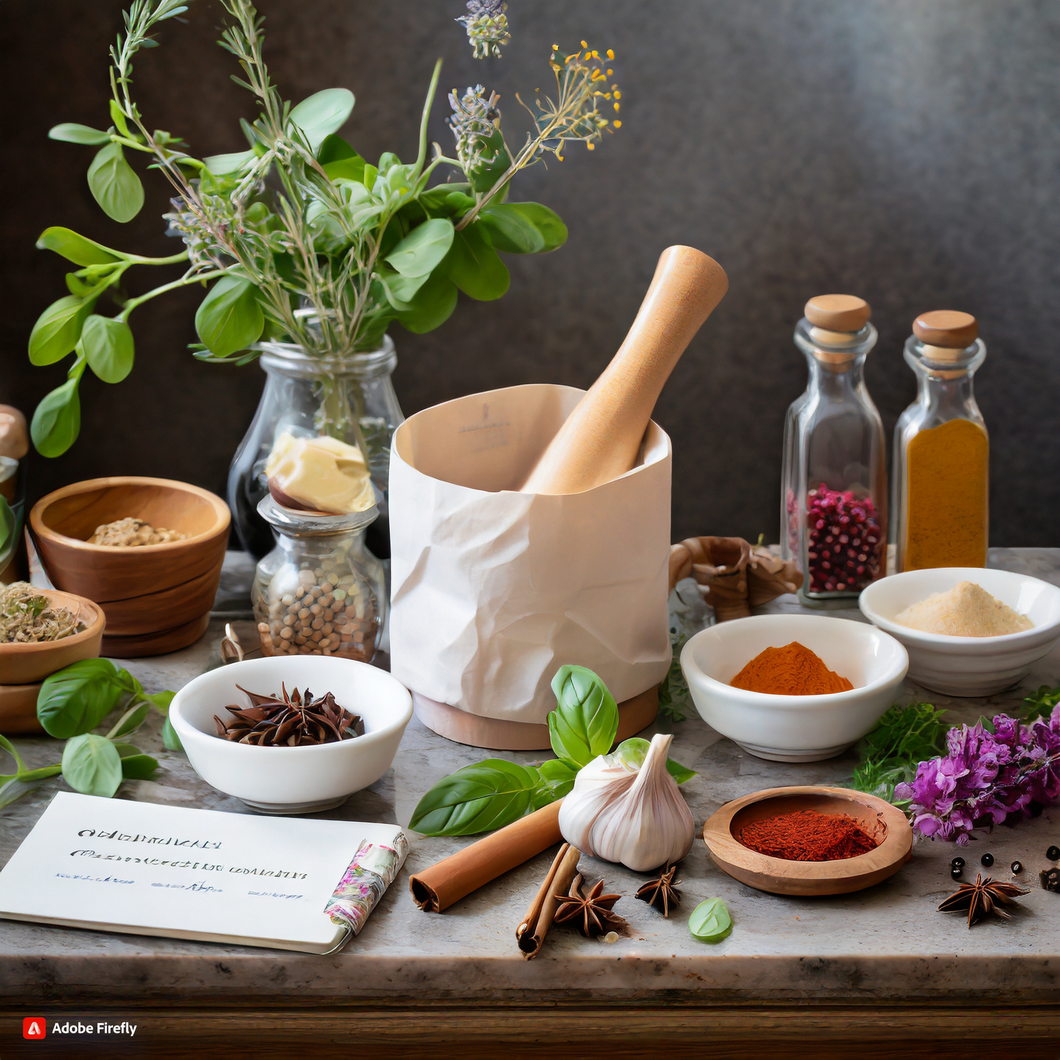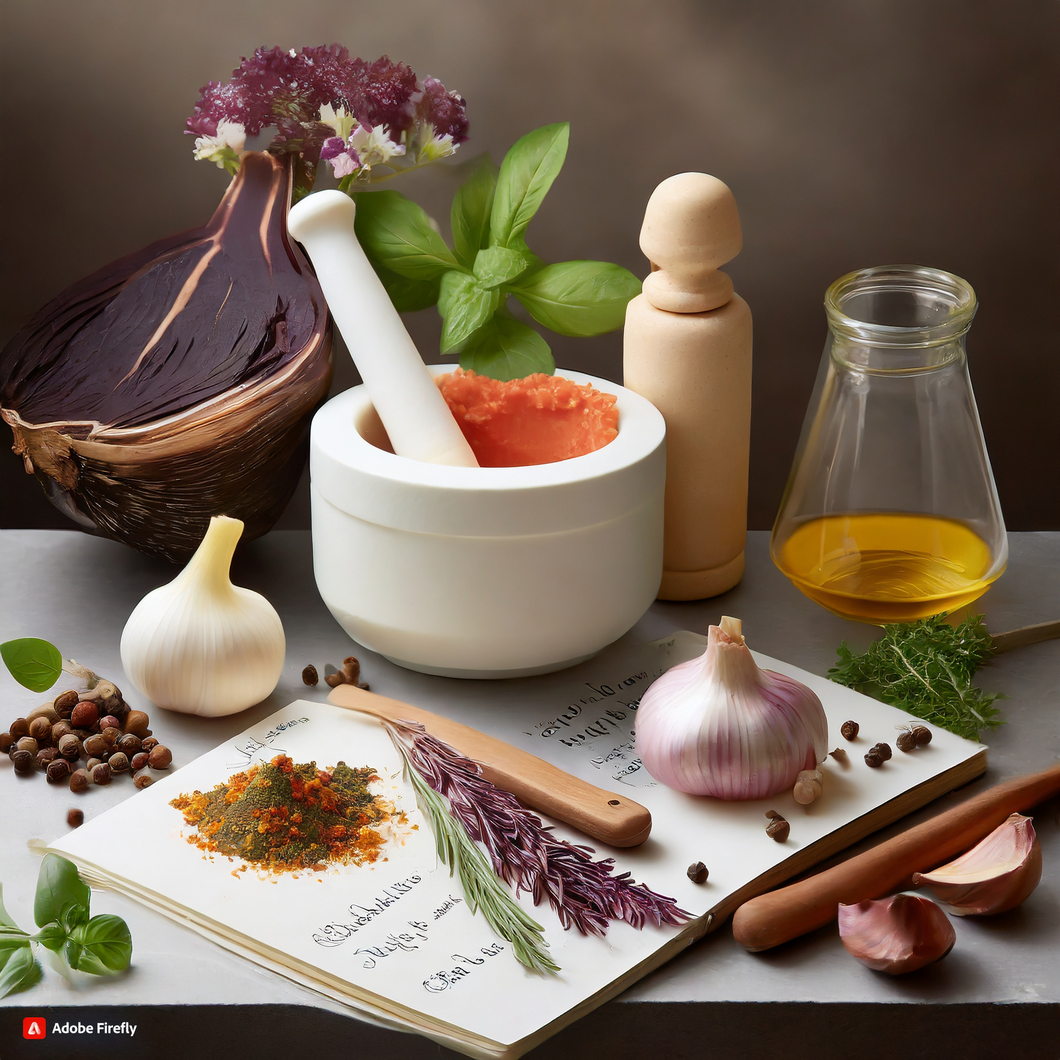Introduction
Flavor Foundations: A Beginner’s Guide to Culinary Art is a comprehensive guide designed for those who are new to the world of cooking and want to learn the basics of flavor and taste. This guide covers everything from understanding different flavor profiles and how to balance them, to techniques for enhancing and elevating the flavors in your dishes. Whether you’re a novice cook or just looking to expand your culinary skills, Flavor Foundations is the perfect starting point for your culinary journey. With easy-to-follow instructions and helpful tips, this guide will help you develop a strong foundation in the art of cooking and create delicious, flavorful dishes that will impress your friends and family.
Understanding the Five Basic Tastes: A Key to Unlocking Flavor Foundations
Have you ever wondered why some dishes taste so delicious while others fall flat? The secret lies in understanding the five basic tastes that make up the foundation of all flavors. As a beginner in the world of culinary art, it’s essential to have a grasp of these tastes to create well-balanced and flavorful dishes. So let’s dive into the world of taste and discover the key to unlocking Flavor Foundations.

The five basic tastes are sweet, sour, salty, bitter, and umami. Each taste has a unique role in creating a harmonious flavor profile. Sweetness is often associated with sugary treats, but it can also be found in fruits, vegetables, and even some proteins. Sourness adds a tangy and acidic note to dishes and is commonly found in citrus fruits, vinegar, and fermented foods.
Saltiness is a crucial component in enhancing flavors and can be found in salt, soy sauce, and cured meats. Bitterness is often associated with unpleasant tastes, but it can add depth and complexity to dishes. It can be found in coffee, dark chocolate, and leafy greens. Lastly, umami is a savory taste that adds a rich and meaty flavor to dishes. It can be found in ingredients like mushrooms, soy sauce, and aged cheeses.
Now that we have a basic understanding of the five tastes let’s explore how they work together to create a well-balanced flavor profile. The key to unlocking Flavor Foundations is achieving a balance between these tastes. Too much of one taste can overpower the others and result in a dish that is either too sweet, sour, salty, bitter, or umami. On the other hand, not enough of a particular taste can leave a dish lacking in depth and complexity.
One way to achieve balance is by using contrasting tastes. For example, if a dish is too sweet, adding a touch of sourness can help balance it out. This is why lemon juice is often added to sweet desserts to cut through the sweetness. Similarly, if a dish is too salty, adding a touch of sweetness can help balance it out. This is why honey or sugar is often added to savory dishes like marinades or sauces.
Another way to achieve balance is by using complementary tastes. This means pairing tastes that work well together to enhance each other. For example, the umami taste in soy sauce can be enhanced by adding a touch of sweetness from honey or a tangy note from vinegar. This is why soy sauce is often used in marinades and sauces to add depth and complexity to dishes.
Understanding the five basic tastes is also crucial in creating a well-rounded and diverse menu. By incorporating a variety of tastes in your dishes, you can offer a range of flavors that will appeal to different palates. For example, if you have a dish that is predominantly sweet, adding a touch of bitterness can help balance it out and add a new dimension of flavor.
In conclusion, the five basic tastes are the building blocks of all flavors. By understanding how they work together and how to achieve balance, you can unlock the key to creating delicious and well-balanced dishes. So the next time you’re cooking, pay attention to the five tastes and experiment with different combinations to create a flavor profile that will tantalize your taste buds. Happy cooking!
The Role of Herbs and Spices in Building Flavor Foundations
When it comes to cooking, there are few things more important than flavor. After all, what’s the point of spending hours in the kitchen if the end result is bland and unappetizing? That’s where herbs and spices come in. These flavorful ingredients are the building blocks of any delicious dish, and understanding how to use them is essential for any aspiring chef. In this beginner’s guide to culinary art, we’ll explore the role of herbs and spices in building Flavor Foundations.
First and foremost, it’s important to understand the difference between herbs and spices. Herbs are the leaves of plants, while spices are derived from other parts such as seeds, roots, or bark. Both herbs and spices can be used fresh or dried, but the latter tends to have a more concentrated flavor. Now that we have that cleared up, let’s dive into the various ways in which herbs and spices can enhance the flavor of your dishes.

One of the most common ways to use herbs and spices is by adding them to dishes while they are cooking. This allows the flavors to infuse into the dish and create a well-rounded taste. For example, adding a sprig of rosemary to a pot of soup or stew can add a depth of flavor that would be missing otherwise. Similarly, adding a pinch of cumin to a pot of chili can take it from ordinary to extraordinary. The key here is to experiment and find the right combination of herbs and spices that work for your taste buds.
Another way to use herbs and spices is by creating rubs or marinades. Rubs are a mixture of herbs and spices that are rubbed onto meat or vegetables before cooking, while marinades are a liquid mixture that the food is soaked in before cooking. Both methods allow the flavors to penetrate the food and create a delicious and flavorful end result. For example, a simple rub of garlic, thyme, and black pepper can elevate a plain chicken breast to a whole new level. And a marinade of soy sauce, ginger, and honey can transform a piece of salmon into a mouth-watering dish.
In addition to using herbs and spices in cooking, they can also be used as a finishing touch. This means adding them to a dish right before serving to enhance the flavors and add a pop of color. For example, sprinkling some fresh chopped parsley on top of a pasta dish can add a burst of freshness and flavor. Similarly, a sprinkle of cinnamon on top of a bowl of oatmeal can take it from bland to delicious. The key here is to use herbs and spices sparingly as a little goes a long way.
It’s also important to note that herbs and spices can be used in both sweet and savory dishes. While we often associate herbs and spices with savory dishes, they can also add depth and complexity to desserts. For example, adding a pinch of cardamom to a batch of brownies can add a unique and delicious flavor. And a sprinkle of thyme on top of a fruit tart can add a surprising twist.
In conclusion, herbs and spices are essential in building Flavor Foundations in cooking. Whether you’re using them in cooking, as rubs or marinades, or as a finishing touch, these flavorful ingredients can take your dishes to the next level. So don’t be afraid to experiment and find the perfect combination of herbs and spices that work for you. Happy cooking!
Exploring Umami: The Fifth Taste and its Impact on Culinary Art
Have you ever taken a bite of food and felt a burst of savory, mouth-watering flavor that you just couldn’t quite put your finger on? Chances are, you were experiencing umami – the fifth taste that has been gaining popularity in the culinary world. In this article, we’ll explore what umami is, its impact on culinary art, and how you can incorporate it into your cooking.
Umami, which translates to “pleasant savory taste” in Japanese, was first identified by Japanese chemist Kikunae Ikeda in 1908. It is often described as a rich, meaty, or brothy flavor that adds depth and complexity to dishes. While sweet, sour, salty, and bitter were the four traditional tastes, umami was officially recognized as the fifth taste in 1985 by the International Union of Pure and Applied Chemistry.
So, what exactly is umami and how does it work? Umami is a taste that is created by the presence of glutamate, an amino acid found in foods such as meat, fish, cheese, and vegetables like tomatoes and mushrooms. When glutamate is combined with certain nucleotides, such as inosinate and guanylate, it creates a synergistic effect that enhances the umami taste. This is why dishes like a classic tomato and mozzarella caprese salad or a hearty beef stew are so satisfying to our taste buds.
But umami is not just about adding a delicious flavor to our food. It also plays a crucial role in the overall balance and harmony of a dish. In traditional Japanese cuisine, umami is considered to be the key to creating a well-rounded and satisfying meal. It is often used to balance out other tastes, such as sweetness or bitterness, and to add depth and complexity to dishes. Read Breakfast Ideas for Weight Loss.

So, how can you incorporate umami into your cooking? One of the easiest ways is to use ingredients that are naturally high in glutamate, such as soy sauce, fish sauce, and Parmesan cheese. These ingredients can be added to dishes like stir-fries, soups, and sauces to enhance the umami taste. Another way is to use ingredients that contain nucleotides, such as dried mushrooms, anchovies, and seaweed. These ingredients can be used to make stocks and broths, which can then be used as a base for soups and stews.
But umami is not just limited to savory dishes. It can also be found in certain fruits, such as tomatoes and ripe fruits like peaches and strawberries. These fruits contain high levels of glutamate and can add a subtle umami flavor to dishes like salads and desserts. Additionally, fermentation is another way to create umami. Foods like miso, soy sauce, and kimchi are all fermented and contain high levels of umami.
Incorporating umami into your cooking can take your dishes to the next level. It adds a depth of flavor that is hard to achieve with just the traditional four tastes. So, the next time you’re cooking, don’t be afraid to experiment with umami-rich ingredients and see how it can elevate your dishes. Read Healthy Dessert Recipes.
In conclusion, umami is a taste that has been around for over a century but has gained more recognition in recent years. It adds a savory, rich, and satisfying flavor to dishes and plays a crucial role in creating balance and harmony in a meal. By understanding what umami is and how it works, you can incorporate it into your cooking and take your culinary art to new heights. So, go ahead and explore the world of umami – your taste buds will thank you.
Q&A – Flavor Foundations
Q: What is Flavor Foundations?
A: Flavor Foundations is a beginner’s guide to culinary art that teaches the basics of creating delicious and well-balanced flavors in cooking.
Q: Who is this guide intended for?
A: This guide is intended for beginners who are interested in learning the fundamentals of culinary art and how to enhance the flavors in their cooking.
Q: What are some key concepts covered in Flavor Foundations?
A: Some key concepts covered in Flavor Foundations include understanding flavor profiles, using herbs and spices, balancing sweet and savory flavors, and creating depth of flavor in dishes.
Conclusion for Flavor Foundations
In conclusion, Flavor Foundations: A Beginner’s Guide to Culinary Art is a comprehensive and informative resource for those looking to improve their cooking skills and understanding of flavor. It covers a wide range of topics, from basic cooking techniques to flavor profiles and ingredient combinations. This guide is perfect for beginners who want to develop a strong foundation in culinary art and for experienced cooks who want to expand their knowledge and creativity in the kitchen. With its easy-to-follow instructions and helpful tips, Flavor Foundations is a must-have for anyone looking to elevate their cooking game.
Please follow us on linkedin. You can learn all best canadian food recipes you can check our Culinary 1TouchFood Youtube and Telegram 1TouchFood page. Don’t forget Fighting Obesity Magazine and Radio Cooking.

